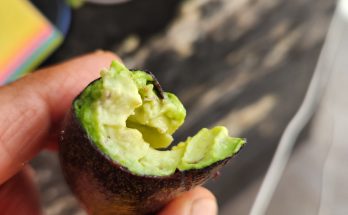By Mike Stoltz
So, just back to San Miguel from an annual trip to France, and aside from jet lag, I’m reacclimating from the intoxicating scent of fresh baguettes from the patisserie au coin to the distinct vectors of barbacoa streaming in from the barrios. While I love France and its cultural milieu, their stinginess and short supply of les toilettes is annoying, so my appreciation for the availability of—and the kind merchants thereto offering unconditional use of—baños in San Miguel has opened my heart that much more to Mexico. “C’est la pee.” What can I say?
However, in short order, my pareja strongly encouraged me to partake in yet another Mexican tradition with heavy party overtones called the Festival of Santa Cruz del Valle del Maíz, on some little street just up from his place on Salida Real a Queretaro. Being spent after a long trip abroad, I really wasn’t keen on heavy drinking, a ton of people, and a late night, but it seemed important to him for me to understand his culture after my heavy bias toward France. So, I felt I should oblige for an hour, then retreat to the tranquility of my guitar, picking out Charles Aznavor tunes over a great rosé in my garden far away from Centro.
Another lesson supporting the healthy proviso to “not to make assumptions” was evident as soon as we reached Valle del Maiz, one of the oldest neighborhoods in San Miguel de Allende, and one where the majority of residents are of Chichimeca or Otomi origin. There was an immediate blessing event, rife with the not particularly pleasant smell of copal, a resin burned for incense. The copal was being heaped upon hundreds of families, locals, and some tourists, many of whom, quite contrary to my expectations, looked eager and enthusiastic about the event. This celebration incorporates commemoration of the Holy Cross, remembrance of the small wars between the Chichimecas and Spanish soldiers, as well as pre-Hispanic practices of harvest dances, prayers, and blessings.
The celebration venerates a Catholic symbol, such as the cross, but also includes indigenous dances and rituals like the blessing to the four winds, part of the Chichimeca culture before the Spanish domination. I spoke to a mother and daughter just outside a tiendita who told me, “We adopted all their (the Spanish conquistadores’) rituals, but we had the need to continue with our original customs that we practiced before the conquest, and we found an opportunity to do so at the party.”
The main objective of the festival is to give thanks for the blessings received during the past year and ask for a good rainy season and an abundant harvest. “It is the need of people to believe in God, or something or someone, and give thanks for life. The celebration is wonderful because it is a space where people meet, talk, forgive, and share. This is the wonder of this party,” the mother/daughter team continued.
We walked behind a procession of families, who were being led by a priest-like figure with the smoke bomb and a team of string musicians, to a charming square. Mau said that he was told by an organizer that they petitioned the city to identify this barrio with its own zip code, giving rise to the independence of its residents. He told me that for more than 15 years he had been wanting to see this band and a particular kind of music called “huapango.” I’m thinking it’s some kind of punk band spewing epithets of gloom, drugs, and anarchy, yet it was anything but. It was kind of like the love child of rap and country, with the lyrics not far removed.
The music was rhyming, much like rap, but also had definitive messages in its lyrics about unification, simplicity, antigovernment, and optimism for the future. It was lovely in its composition; I was moved, as was the large audience. It was kind of like watching a tied score in the 9th inning of a Dodgers game when home plate is stolen to win the title. The crowd was united in spirit.
I wound up not skipping out after an hour but watched the sun come up over this little barrio and was glad I made the effort. What I didn’t understand until I asked a local up the street where I bought our espresso was why the indigenous would support the notion of incorporating the Spanish conquistadores’ image of their own Santa Cruz into a party that is for the indigenous people who were conquered by the same? “In the end,” she said, “you cannot push away the church, but you can remember who you are. And with this party, like the song you liked said, I feel at home among my people.”
I guess as much as I love my place in France, for the first time, I was starting to feel that way here in San Miguel de Allende, “home among my people,” and that’s a nice, unexpected feeling.




